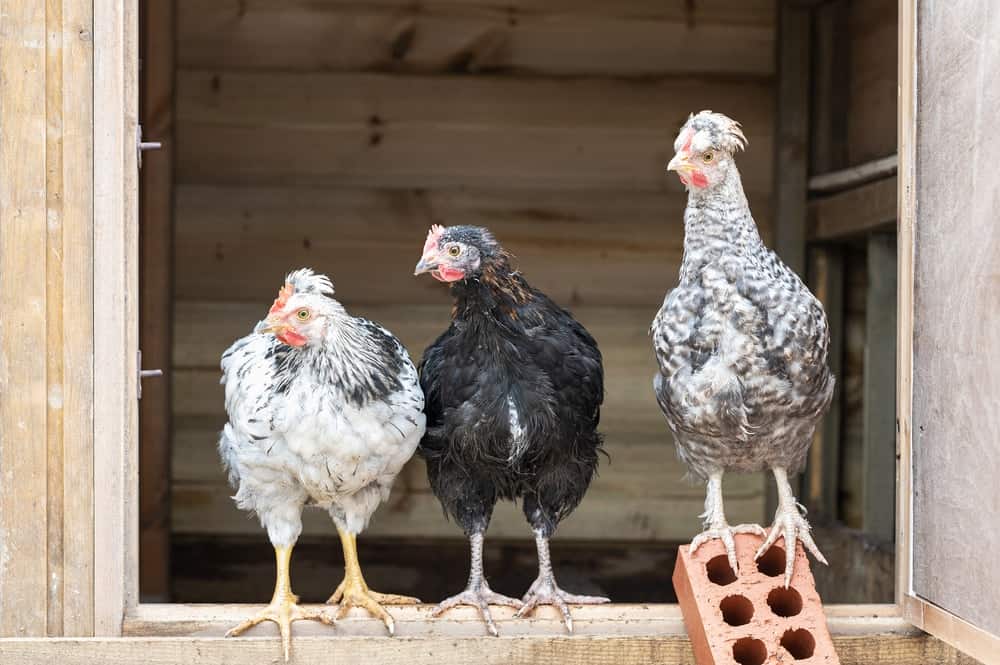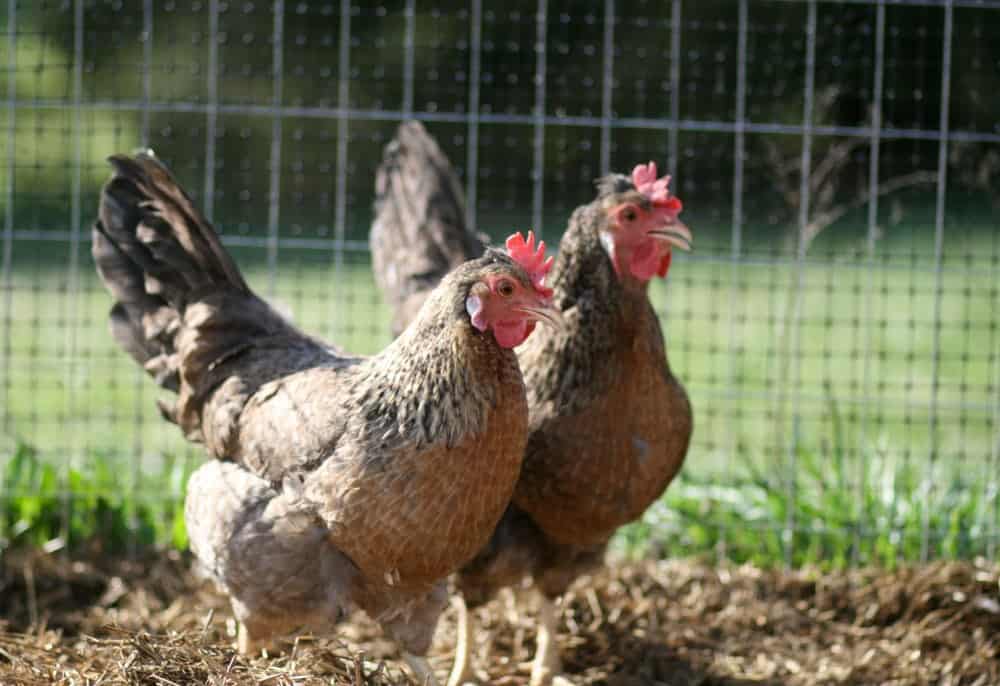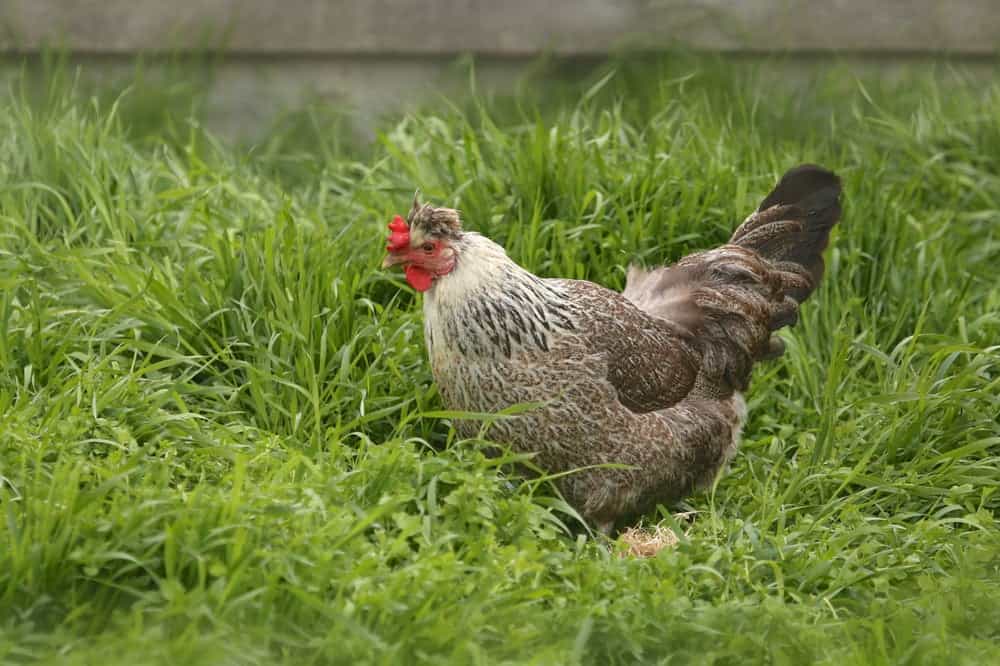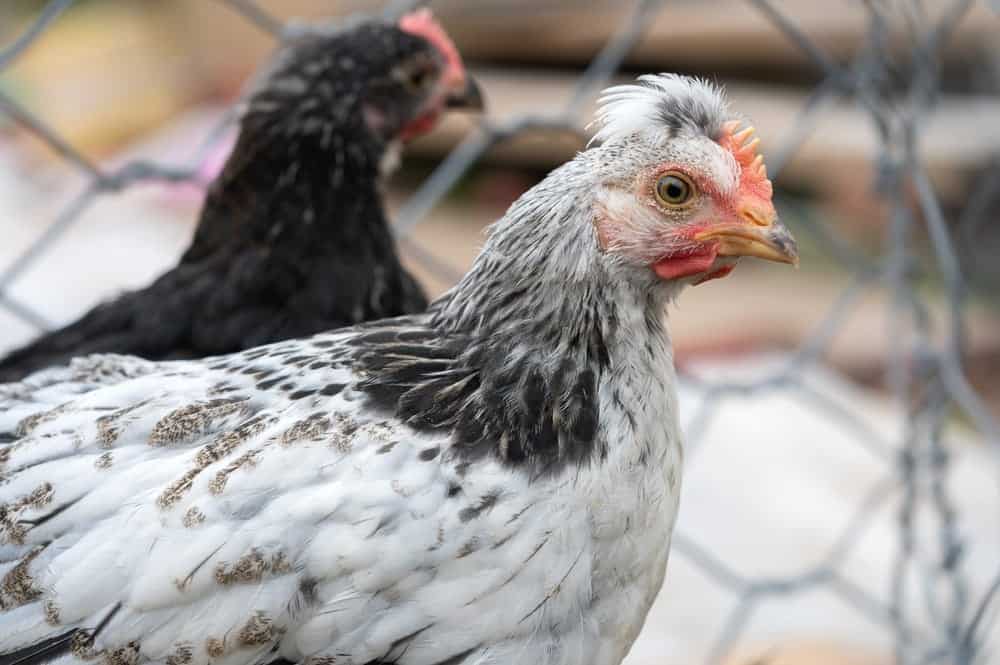The Cream Legbar was first bred in the early 20th century at the Genetical Institute at Cambridge University. Designed to be an auto-sexing breed, this chicken is a mix between a few other American chicken breeds, including the Barred Plymouth Rock and Brown Leghorns.
Legbar chickens typically come in gold and silver varieties. However, a few color variants do exist, as only certain lines were interbred with other breeds. Therefore, you can find some that have no crest, lay different color eggs, or have different colors altogether.

Quick Facts About the Cream Legbar Chicken

| Breed Name: | Cream Legbar Chicken |
| Place of Origin: | America |
| Uses: | Pet and egg production |
| Male Size: | 7 pounds |
| Female Size: | 5.5 pounds |
| Color: | Gold, White, or Silver |
| Lifespan: | Unknown |
| Climate Tolerance: | Moderate heat tolerance |
Cream Legbar Chicken Origins
There are several Legbar chicken varieties out there. These chickens are differentiated by their color, which is affected by the chickens that were crossbred to make it. Cream Legbars are only one example of this breed.
The breed was produced at Cambridge University in the 20th century. They were bred by Reginald Punnett, who was a major influencer in genetics. (Remember the Punnett square in biology class?)
These breeders were looking to create egg-laying chickens that could be auto-sexed, which basically means that you can tell the difference in genders from birth. Males and females are different colors the moment they are hatched, which makes sexing very easy.
They accomplished this by breeding Brown leghorns and Barred Plymouth Rocks together over several generations. Then, they began breeding their new breed to other chickens to produce all of the color variations we have today.
In the end, this produced a chicken that could be easily sexed, had excellent egg-laying abilities, and produced blue-green eggs.

Cream Legbar Chicken Characteristics
These chickens are primarily known for their egg-laying ability and autosexing trait. Therefore, you can tell males and females apart from the moment they are born. Typically, they produce a decent amount of blue or green eggs, however, some hens do lay white eggs. It depends on the exact line and genetics.
Usually, these chickens do not lay in the winter, though there is the occasional hen that doesn’t care what season it is. While they are not terribly broody, some hens will decide to raise chicks occasionally. However, this is not very dependable, so don’t count on it.
They are very hardy, though they are prone to frostbite on their combs so we recommend them for warmer climates. Due to their coloration, they blend in well with most environments. This chicken also seems to be rather predator-savvy.
Overall, these chickens are great free-range birds. They also make good pets, as they are pretty friendly. They even get along with other breeds of chicken without too much of a problem.
Uses
For the most part, these chickens are utilized for their egg-laying ability. They may not produce the most eggs, but their autosexing trait makes them a great option for certain people. If you only want female chickens, then their autosexing ability is a must.
They make very poor meat birds, but they will compete with some of the best egg-laying chickens.

Appearance
These chickens have a unique coloration that is a mix of black, gray, and tan. No two chickens are alike, and roosters have an obvious barring pattern.
These chickens are known for their adorable crest, which is most noticeable in hens. They have white earlobes and larger wattles. Of course, their coloration and features can vary. Show-grade hens are going to be a bit different than your average hen, after all.
Population
These chickens are rather rare. We do not know exactly how many of them there are, as they are a more niche breed. Usually, you can be hard-pressed to find chicks available, and most are raised specifically for showing.
They were never really widespread, as they existed mostly in a university setting for years. After the program was ended, the hens were difficult to find. They are currently in the Rare Breed Survival Trust, which is attempting to help the breed survive. However, they are not considered a “priority”.

Are Cream Legbar Chickens Good for Small-Scale Farming?
These chickens can be hard to find, so they are usually not the average choice for small-scale farming. You’ll likely pay more for them than your average chicken simply because they are much harder to find. However, that does not mean that they are impossible to find. If you get lucky, you may just find a few eggs for sale.
If you’re looking for egg layers solely, then this breed can be a good option. A hen can lay as many as 180 eggs a year, and they usually get along in mixed flocks. They are also friendly birds, so they are a treat to take care of.
Featured Image Credit: Lilly Trott, Shutterstock
